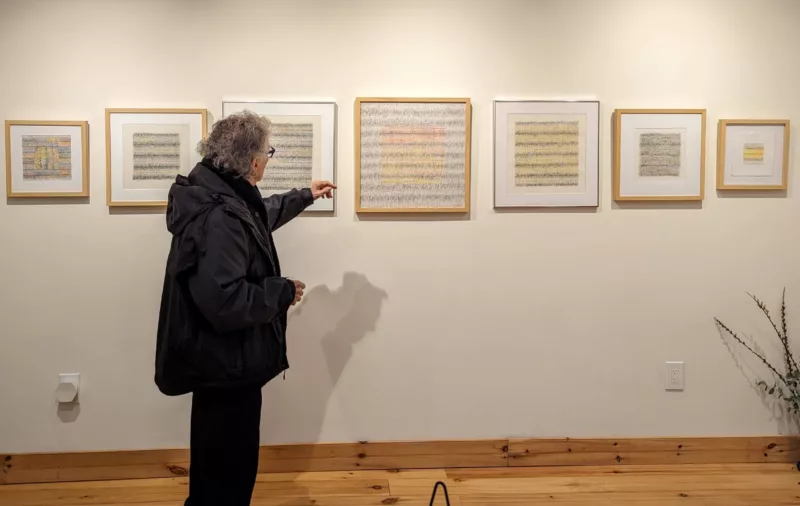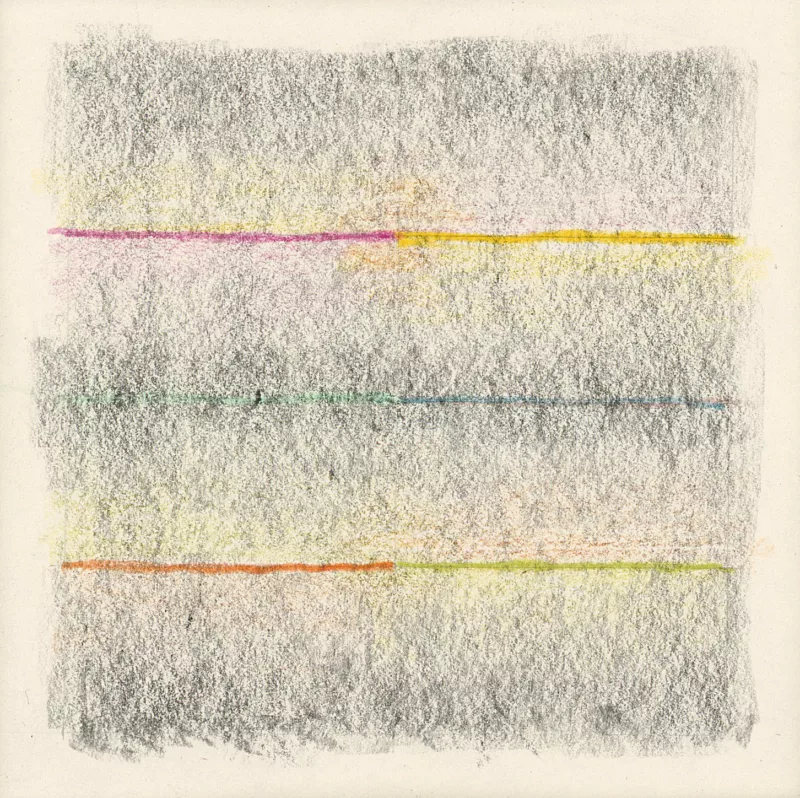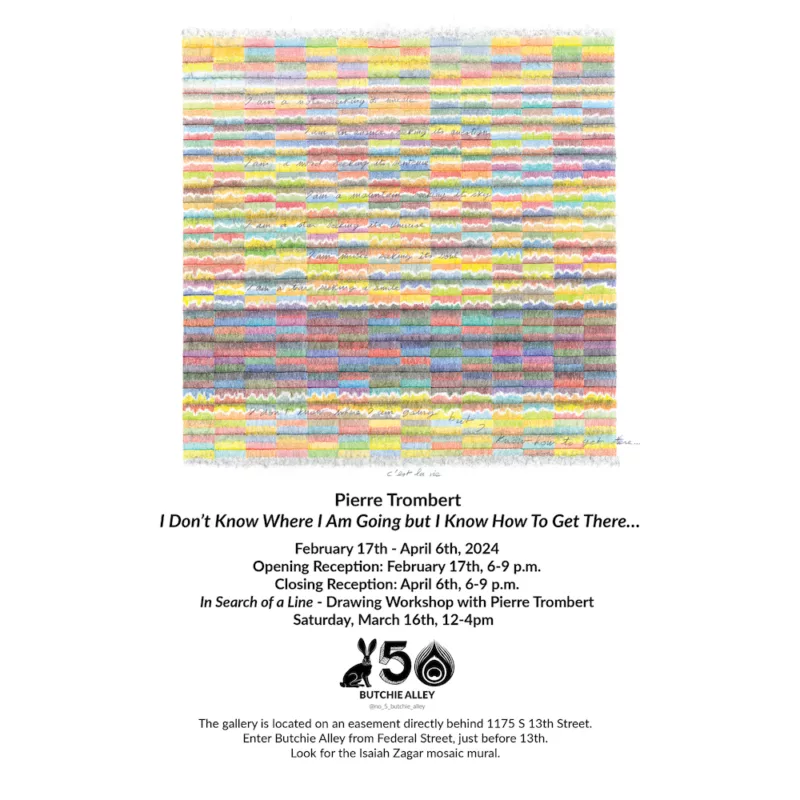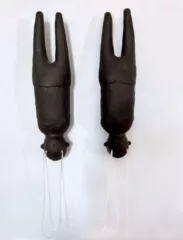
I’ve experienced an interesting trend this winter — that of the 80+ and 90+ year old artists stepping out to bring their work (back) into the public view. (See: (re)Focus, Then and Arlene Love at iMOCA)
Pierre Trombert will be 84 next month and is having his debut solo show titled I Don’t Know Where I Am Going, But I Know How To Get There at No. 5 Butchie Alley, on view until April 6th. I’ve known Pierre for probably 15 years, but this is the first time I have really seen his works on paper. Trombert’s life has been a series of love affairs, which he has been writing about in a series of memoir manuscripts for several years now. One of the affairs was with the magnificent house that he bought for a song at 5th and Spring Garden Street in the early eighties. The Comet Club was a speak-easy with a bar, juke box (which remained on premises until the house was sold in 2021), and 2 lane bowling alley that operated from 1881 until sometime in the 1960s. The basement was full of bowling pins and balls, old beer bottles, cafe tables and chairs. I, too, was in love with that house. It was really 2 conjoined houses with an M.C. Escher-esque staircase in the middle that was a never ending work in progress. In a living room here or a sitting room there lived the vestiges of past projects and set pieces from his mime theater that he directed from 1974-1984. Every part of the house and its contents had a delicious wood stained and soft green-black patina.

The drawing show is a group of related works that are all a love affair with line. With a heavy French accent, Pierre explained to me that when he was a child, his father was a Sunday painter. Alongside his father, Pierre would do drawings and would often present them as gifts to friends or family. His life-long drawing practice has always been for himself. His lines have followed him and directed him along a journey in which the destination remains unknown, but he knows how to get there. As a child in France, he gained a fascination with the American Indian. His childhood included many games of “cowboys and Indians”, and at a young age he made an internal decision that one day he would move to America. On family trips into the Alps, Pierre regularly went to the tops of mountains and sat and looked and looked and tried to make those mountains disappear, following what he had read about the spiritual practices of Native Americans. Once, they actually did, and Pierre decided that was enough of that. But the horizon line between the mountain tops and the sky still appears in his drawings. Line is everything. A series of points is a line. You put a number of lines together to make a form. There’s something about kinaesthetics and quantum mechanics and the multiverse that neither of us quite understand but it blows the mind. The lines become like bars of music. There’s music in the universe. Turn around, face a drawing, and hum the music that you see, Trombert instructs guests at the show opening on February 17th. The room finds a harmonious tone together.
 But it is both the bringing together of line and universe and the breaking of it that fascinates Trombert. Sometimes, he says, you need an opening to break out. If it’s negative — break it. Now make it a positive. He says that you have to break things to find out what is inside, or how it works — even people. These days we have a whole lot of answers, but we have forgotten how to ask questions, says Trombert. He claims he dislikes teaching but for all the years and students he has taught in architectural and design programs, he must have broken many many students out of their boxes.
But it is both the bringing together of line and universe and the breaking of it that fascinates Trombert. Sometimes, he says, you need an opening to break out. If it’s negative — break it. Now make it a positive. He says that you have to break things to find out what is inside, or how it works — even people. These days we have a whole lot of answers, but we have forgotten how to ask questions, says Trombert. He claims he dislikes teaching but for all the years and students he has taught in architectural and design programs, he must have broken many many students out of their boxes.
These drawings are his whole self in a line. Get really close-Look at the incredibly subtle changes. Now stand far away and look at the equally subtle, but completely different changes. Trombert claims he doesn’t “give a damn” about what the viewer sees in his drawing- your experience belongs to you. And the whole thing makes him emotional. It’s a true giving of himself that he has put forth in this show. He has, with the gentle urging and great persistent shove of Terri Saulin and his long time partner Marguerita Hagan, provided a way for some of us to break into his soul. Hum. Hum. Hum.
“I don’t know where I am going. The search is beautiful.”
Read Katie Dillon Low’s review of the (re)FOCUS exhibits at Moore College of Art and Design.
Pierre Trombert: I Don’t Know Where I Am Going, But I Know How To Get There, No. 5 Butchie Alley, until April 6th. Closing Reception with performance (TBA) April 6th, 6-9pm
Sign up for a drawing workshop (more information on how to register soon)
In Search of a Line
Drawing workshop with Pierre Trombert
Saturday March 16th, 12-4 p.m.
Participants will draw a line in poetry and color inspired by selected music from classical to minimalist to modernism.
3 music pieces : 3 drawings









